A nautical classic with a modern twist!
Anthropologie brought out this set of six appetizer plates this spring and it’s already sold out. Called Caskata Rigging, it is a fine addition to their From The Deep dinnerware.
Inspired by the New England Coastline, the line drawings of sailing ships are striking.
I couldn’t wait to style a table with them.
The vivid shade of Old Williamsburg Deep Blue Ultra iced tea glasses reflected the deep blue in the etchings.
The more sombre navy of the Pacfica Dinner Plate by Williams Sonoma was set off by the crisp white of the Queen Anne Pillivuyt salad plate, topped by the Caskata Rigging appetizer plates.
A fishnet from Amazon made a fun runner and the wooden boat open salt from Pier 1 last year, floated happily on the surface.
Montauk Twisted Rope Blue Napkins from Pier 1 last year picked up both the royal and navy blues beautifully. Sawyer cutlery and wooden napkin rings are both by World Market.
The rattan sailboat was a HomeGoods find.
I really enjoyed the beautifully rendered sailing ships on the plates. The detail is lovely; the rigging is all numbered.
On our last trip to England, we visited the Historic Chatham Dockyards where they have been making rope since 1618. Rope was essential to the Royal Navy, as a first-rate ship of the line required over 30 miles of rope – over 20 for its rigging alone.
The longest building in the dockyard is the ropery – over 1/4 of a mile, or 1000 ft long.
Rope fibres twist up to about one-third of their original length as they are twisted round and round to form a rope. An anchor rope on a first-rate British Navy sailing ship had to be 240 ft long, and one didn’t want a knot in the middle! So the rope walk where the rope was made needed to be at least three times that length, with the additional allowance for the added shrinkage from several strands of rope, twisted together to make the very thick anchor rope. Whew! Here are a few examples of the rope they make.
We saw a fascinating demonstration on how rope was made. It gave me a whole new appreciation for the intricacies of building and outfitting a ship,
I’ll do an Entertablement Abroad post on Chatham when I get a minute, but in the meantime, I’ll just mention that Historic Dockyards are well worth a day out for a number of reasons, It’s where Call the Midwife is filmed, for instance! Historically, it’s where Admiral Horatio Nelson’s ship HMS Victory was built, though the restored ship is at the Portsmouth Dockyard (also a marvellous visit)
But back to the table. The “rope” lanterns are ceramic, lined with a clear glass sleeve, and came from Harvest of Barnstable.
Aye, Matey! I hope you’ve enjoyed the sail round the table.
I’m sharing this post with Between Naps on the Porch.

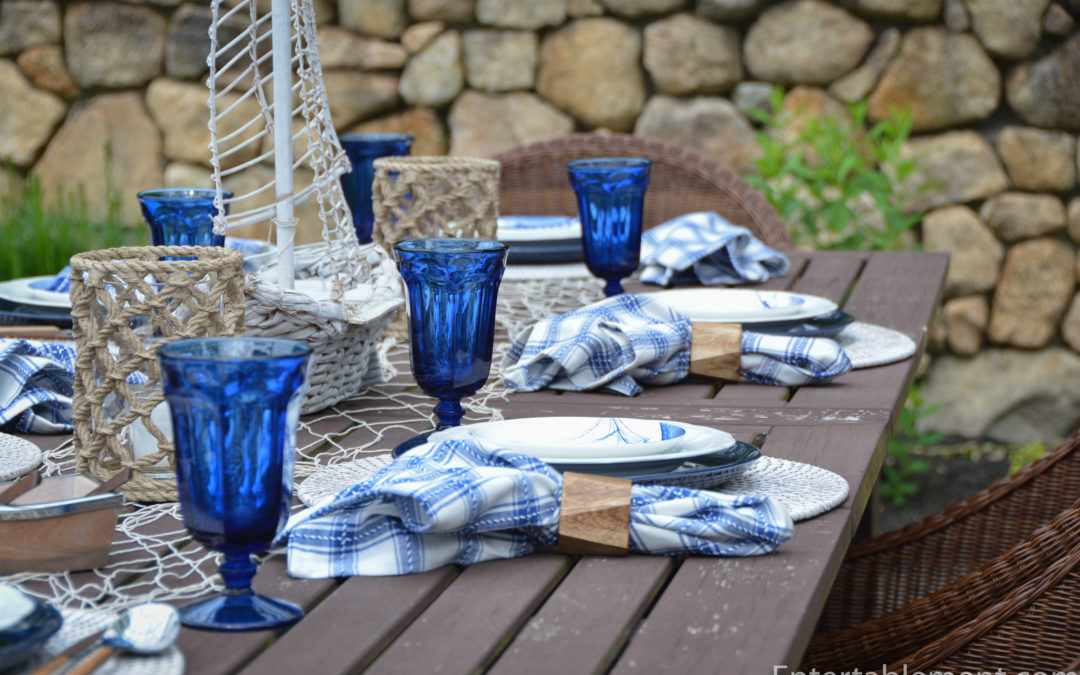
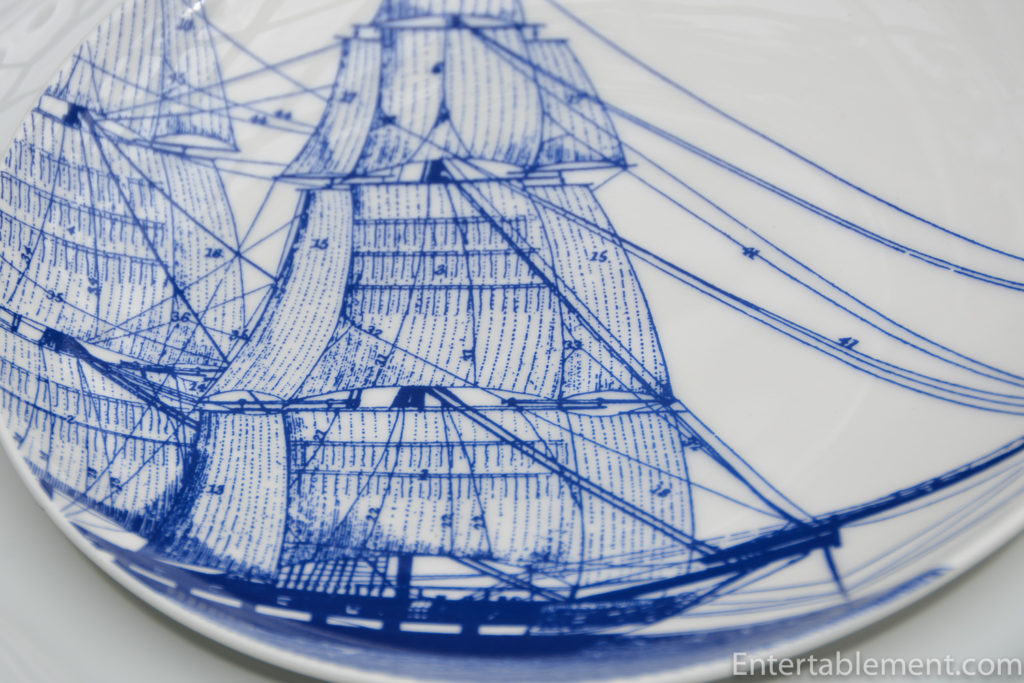

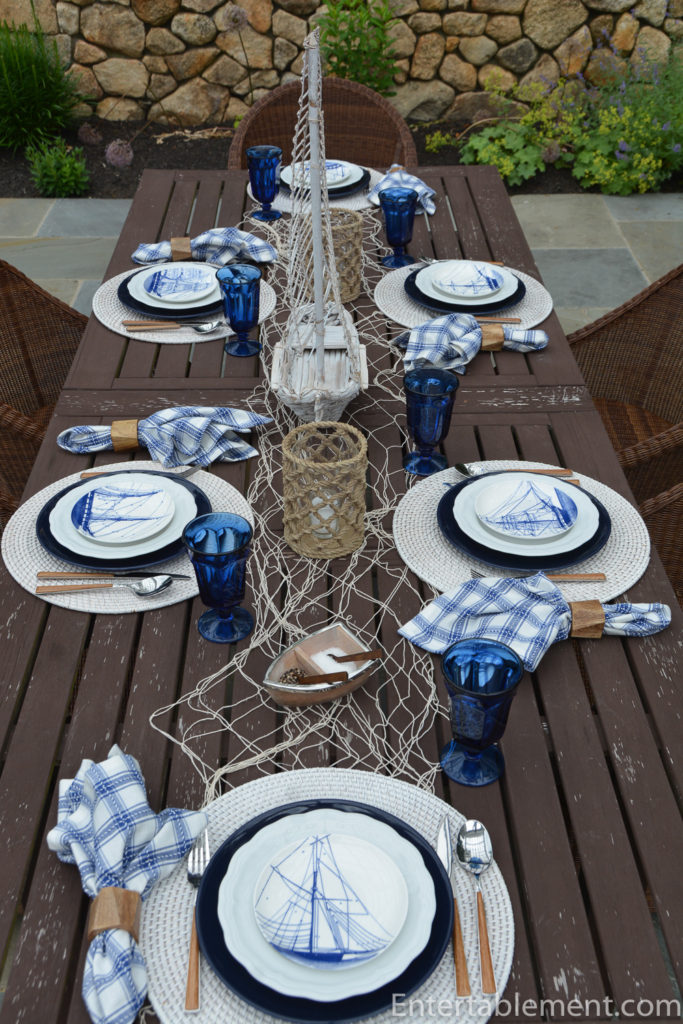
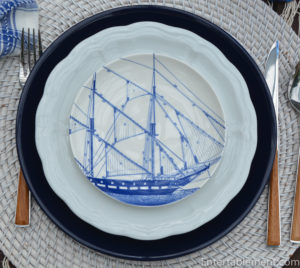




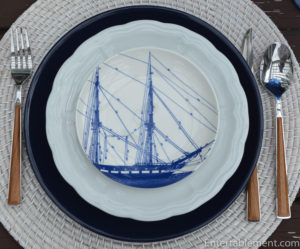





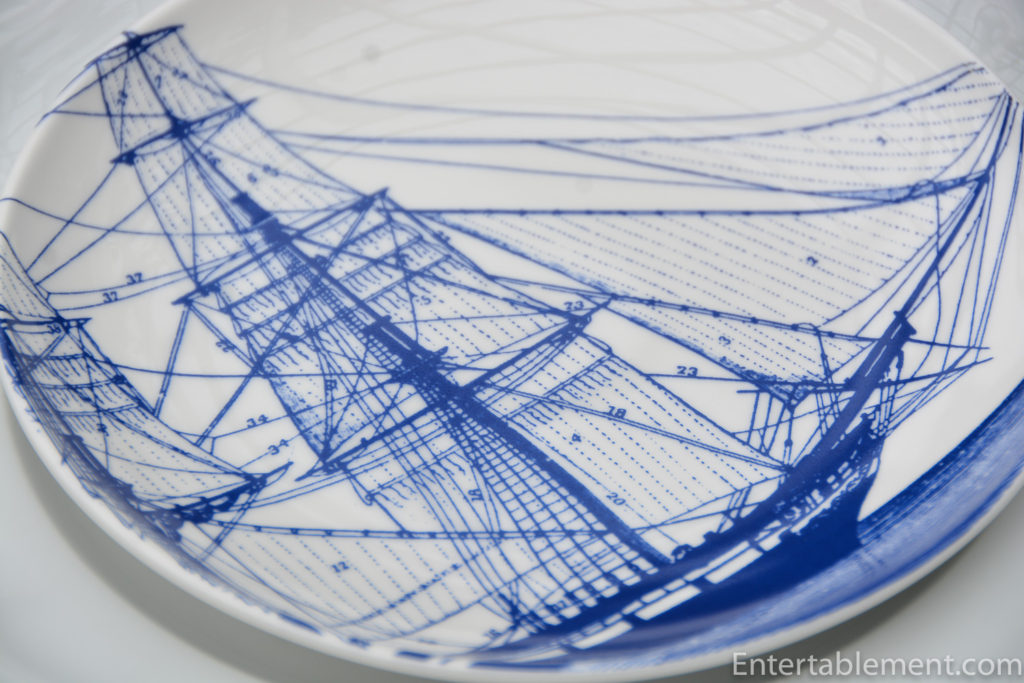

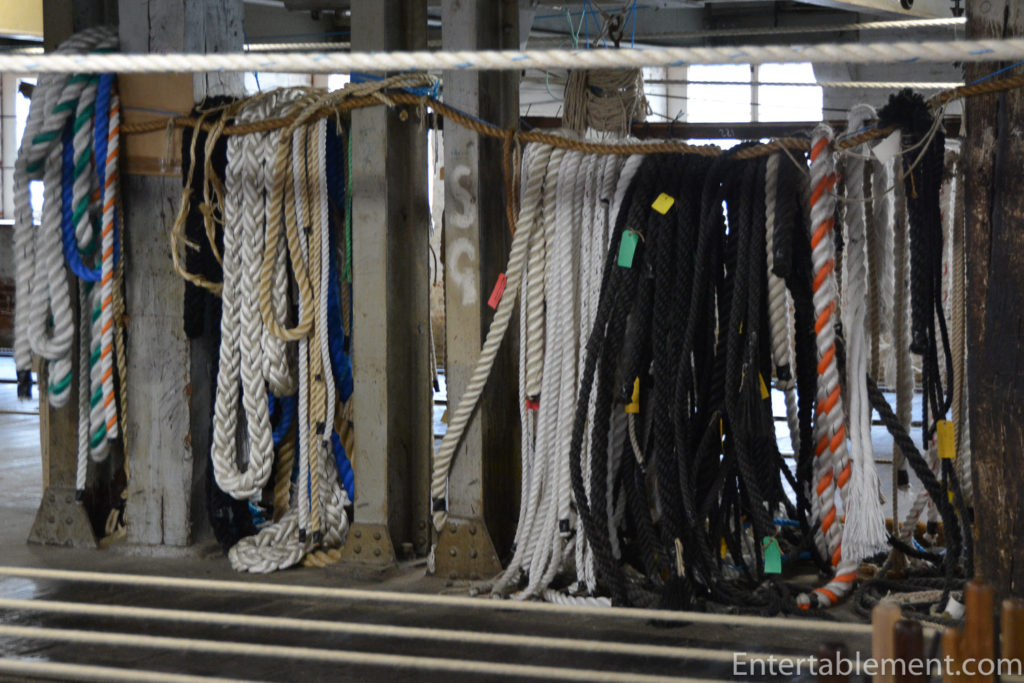

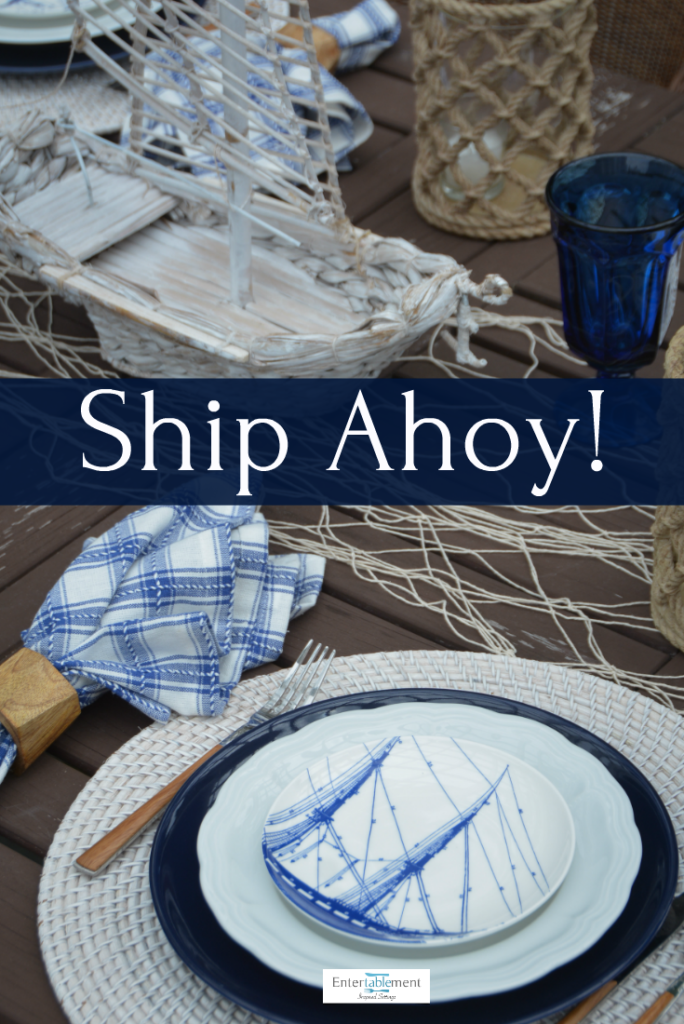

This table is truly a sailor’s delight. When we went up to Belfast to see the replica of theTitanic, it was also a rope making area growing hemp and all the ropes for this magnificent ship were made there. Interesting lesson on rope making. love the rattan sailboat and all the deep blue glasses, checked blue napkins and just the whole nautical look.
We loved the whole rope making experience at Chatham, Maura, and I imagine it was a similar process on any coastal town. We went to see HMS Victory in Portsmouth on another day. Marvellous!
Glad you liked the table. I’ve had a blast with the nautical accoutrements this year 🙂
Want to feel like a pirate for a day? Fly to the island of Madeira and sail on an exact replica of the Santa Maria. Built by a (wonderfully) crazy Dutchman, it’s a 3-master 22 metres long made entirely of mahogany. It’s a beautiful trip, and as you hear the timbers of the ship groan and smell the tar and the salt air while sailing just off shore this ravishing island, you’ll marvel at the thought of 52 burly men working crammed in together for more than 10 weeks! It was the highlight of a wonderful trip last year to The Pearl of the Atlantic. Of all the places I’ve been, this ranks in the top 3 for sheer beauty–and the flowers!!
http://www.santamariadecolombo.com
Thanks so much for the recommendation, Beatrice. I will certainly check this out. What an adventure 🙂
As you say, it’s the physical experience of standing in the cramped quarters as you try to envision what it must have been like with all the noise and press of bodies that is so compelling. When we went below deck on the HMS Victory to see the spot where Nelson died, I was awed by how dark and compressed everything was. No one could stand upright, the ceiling was so low, and it’s hard to fathom how smelly, noisy and frightening it must have been during the battle, surrounded by injured and dying men.